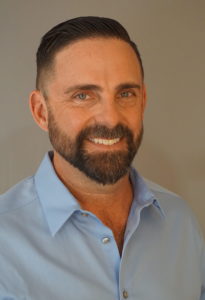Cyberbullying Resources for Parents and Caregivers
As caring and supportive adults, we aspire to guide youth toward becoming compassionate, understanding, and resilient individuals. In a world where social and emotional challenges ...
 As an adolescent suicidologist, I have worked closely with many families who are worried about losing someone close to them.
As an adolescent suicidologist, I have worked closely with many families who are worried about losing someone close to them.
I am also a gun owner and sportsman.
Though my professional role and my recreational activities might seem incompatible, together they give me a unique, well-informed perspective on our nation’s seemingly endless string of shooting tragedies.
Suicides account for the majority of gun deaths in the United States; that number rose to 54% in 2020. Firearms are also the leading method of suicide.
Young people between 10 and 19 are particularly vulnerable—especially in rural America, where the odds of dying by suicide are twice as high as it is for those living in cities. Factors include socioeconomic stressors, limited access to mental health services, the fact that rural teens perceive easier access to a gun (36%) compared to their urban peers (18%), and actual access to lethal means.
President Biden recently signed into law the first major gun safety legislation passed by Congress in nearly 30 years. Its budget centers on school safety, mental health, and intervention programs, while offering incentives for states to strengthen comprehensive background checks for prospective gun-owners between the ages of 18 and 21. All of these are important initiatives. However, the new legistlation fails to promote “means safety”—such as storing and securing firearms so that they are less accessible to those experiencing a suicidal crisis.
In a moment of acute distress, access to lethal means (or lack thereof) can be the difference between life and death. When a fence barrier was installed on the Duke Ellington Memorial Bridge, suicide deaths from the bridge were reduced by 90%—and it did not increase the rate of attempts at other bridges around Washington, D.C. We can reduce death by firearms using the same model. Rather than attempting to predict individual behavior, prevention should focus on reducing access to lethal means.
We can prevent firearm suicides if we first focus on the “how” of suicide, instead of focusing exclusively on the “why.” This theory is at the heart of the lethal means safety movement.
The lethal means safety approach is based on several scientific findings:
These scientific findings should be shared with every gun-owning family. They should know to anticipate fluctuations in the mood and behavior of relatives and friends—and, therefore, seek to make their environments as safe as possible for their loved ones, in any state of mind.
Out-of-home gun storage options are available. However, if a family insists on storing their guns at home, there are secure options, including the use of safes, storing ammunition separately from guns, and removing slides or bolts.
I endorse the Counseling on Access to Lethal Means (CALM) approach, which is about safety, not confiscation. Because I understand that, for many families throughout America—especially those who engage in hunting or recreational shooting sports—owning guns is a way of life. However, mental health crises are also a reality. It is important to be transparent about this, establish trust, and then provide guidance.
In my clinical work, one response I hear from families, time and again, is the relief they express to me when I demonstrate a commitment to the safety of their children—while simultaneously respecting their traditions and customs.
Mental health advocates and gun owners may seem like strange bedfellows. But, in my experience, the shooting sports and hunting communities are the most vocal advocates of firearms safety. There are opportunities to welcome them as equal partners in the prevention of mass shootings and firearm suicides. An example is the New Hampshire Firearm Safety Coalition; it brings together gun retailers and public health professionals to jointly develop gun safety campaigns at the point of purchase.
Recent efforts by Congress to facilitate access to mental health treatment are great, but it is not enough. We have the evidence and ability to do more, and save more lives, right now. Reducing firearm deaths, both suicides and homicides, will require proactive partnerships—not only in Congress, where bipartisan compromise has been shamefully lacking in recent years, but also between mental health advocates, public health officials, and—yes—gun owners. We need to work together if we’re going to solve this particularly American problem; there is no other way.
If you or someone you know needs to talk to someone right now, text, call, or chat 988 for a free confidential conversation with a trained counselor 24/7.
You can also contact the Crisis Text Line by texting HOME to 741-741.
If this is a medical emergency or if there is immediate danger of harm, call 911 and explain that you need support for a mental health crisis.